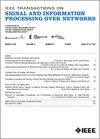用于分散学习的自然梯度原始双法
IF 3
3区 计算机科学
Q2 ENGINEERING, ELECTRICAL & ELECTRONIC
IEEE Transactions on Signal and Information Processing over Networks
Pub Date : 2024-04-26
DOI:10.1109/TSIPN.2024.3388948
引用次数: 0
摘要
我们提出了自然梯度原始双法(NGPD),用于深度神经网络(DNN)中参数的分散学习。传统方法(如原始-双重方法)会限制连接节点之间的局部参数相似。然而,由于这些方法大多采用一阶优化法,而 DNN 的损失函数可能具有条件不佳的曲率,因此需要在局部节点之间进行多次局部参数更新和通信。为了实现快速收敛,我们将二阶自然梯度法整合到了初阶-二阶法(NGPD)中。由于额外的约束条件使参数更新前后的输出变化量最小,因此对条件不佳的曲率具有鲁棒性。我们从理论上证明了在某些假设条件下平均参数(局部参数的平均值)的收敛速度。在不显著增加计算开销的情况下,我们引入了 Kronecker 因子近似曲率(K-FAC),作为 NGPD 的实际应用。我们的实验结果证实,NGPD 在使用 DNN 的图像分类任务中取得了最高的测试精度。本文章由计算机程序翻译,如有差异,请以英文原文为准。
Natural Gradient Primal-Dual Method for Decentralized Learning
We propose the Natural Gradient Primal-Dual (NGPD) method for decentralized learning of parameters in Deep Neural Networks (DNNs). Conventional approaches, such as the primal-dual method, constrain the local parameters to be similar between connected nodes. However, since most of them follow a first-order optimization method and the loss functions of DNNs may have ill-conditioned curvatures, many local parameter updates and communication among local nodes are needed. For fast convergence, we integrate the second-order natural gradient method into the primal-dual method (NGPD). Since additional constraint minimizes the amount of output change before and after the parameter updates, robustness towards ill-conditioned curvatures is expected. We theoretically demonstrate the convergence rate for the averaged parameter (the average of the local parameters) under certain assumptions. As a practical implementation of NGPD without a significant increase in computational overheads, we introduce Kronecker Factored Approximate Curvature (K-FAC). Our experimental results confirmed that NGPD achieved the highest test accuracy through image classification tasks using DNNs.
求助全文
通过发布文献求助,成功后即可免费获取论文全文。
去求助
来源期刊

IEEE Transactions on Signal and Information Processing over Networks
Computer Science-Computer Networks and Communications
CiteScore
5.80
自引率
12.50%
发文量
56
期刊介绍:
The IEEE Transactions on Signal and Information Processing over Networks publishes high-quality papers that extend the classical notions of processing of signals defined over vector spaces (e.g. time and space) to processing of signals and information (data) defined over networks, potentially dynamically varying. In signal processing over networks, the topology of the network may define structural relationships in the data, or may constrain processing of the data. Topics include distributed algorithms for filtering, detection, estimation, adaptation and learning, model selection, data fusion, and diffusion or evolution of information over such networks, and applications of distributed signal processing.
 求助内容:
求助内容: 应助结果提醒方式:
应助结果提醒方式:


